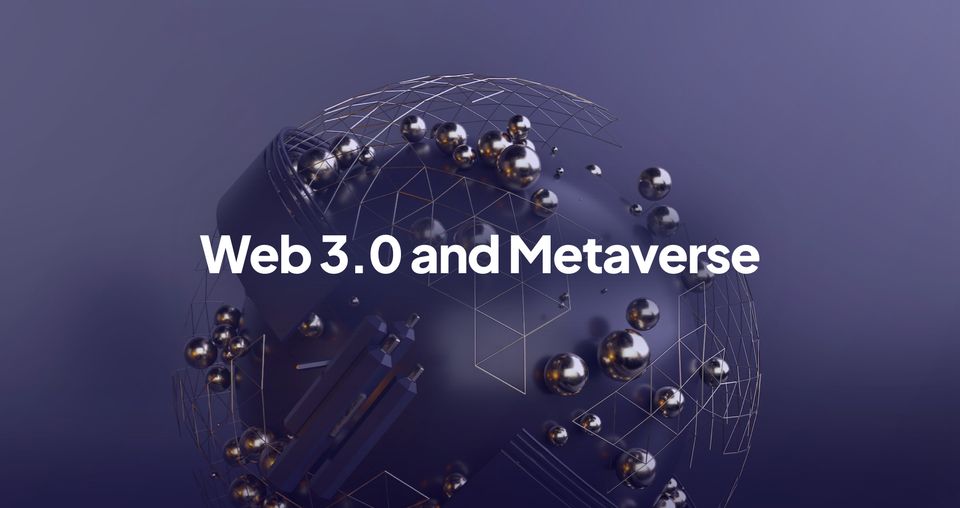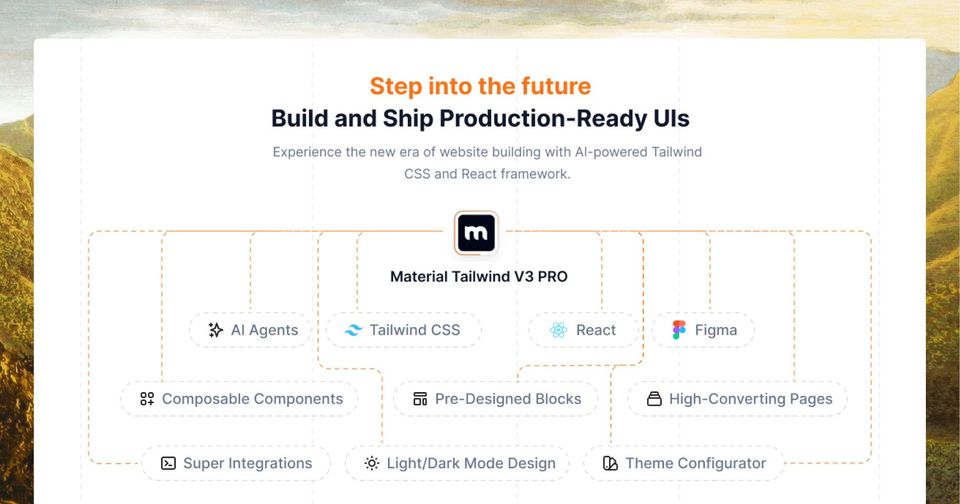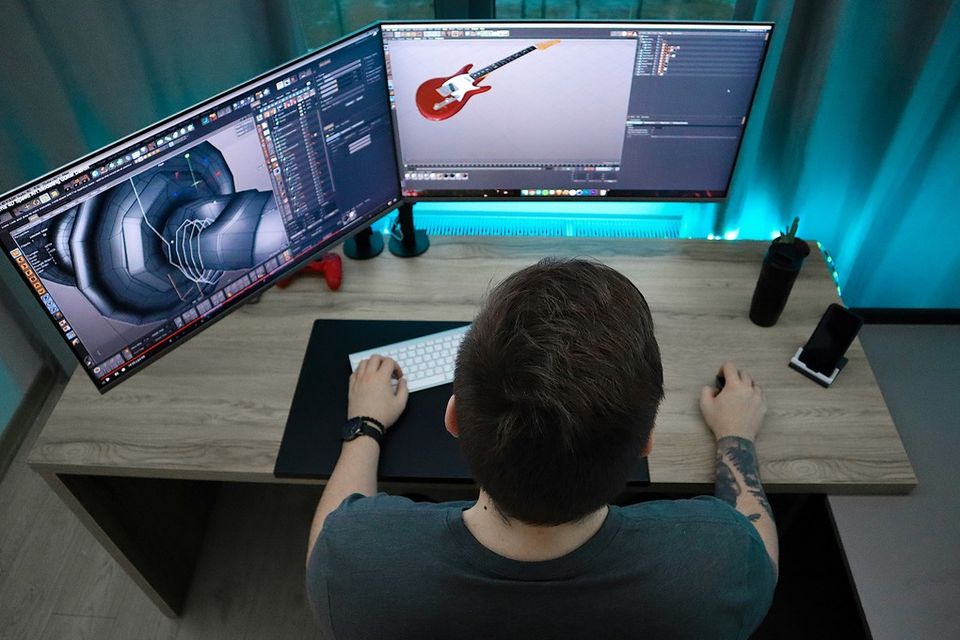In an attempt to connect with the denizens of the internet and change the way the public sees Meta, Mark Zuckerberg spent much of the last quarter of 2021 and nearly the entirety of 2022 frequenting popular podcasts. His tour included The Joe Rogan Podcast, Lex Fridman, Tim Ferriss, and Gary Vee. His appearance on Gary Vee was arguably the most notable as he spent his time discussing Web 3.0 and the metaverse.
Demystifying these topics will aid in getting more people to embrace Meta’s line of future products. After all, Mark Zuckerberg’s net worth is closely connected to Meta’s performance.
But investors are unconvinced of Meta’s new focus on the metaverse and other Web 3.0 internet technologies. Should they be? This is what the following guide hopes to uncover.
🤖 Improve you Web 3.0 project with an AI Chatbot trained on your website data!
What Is Web 3.0
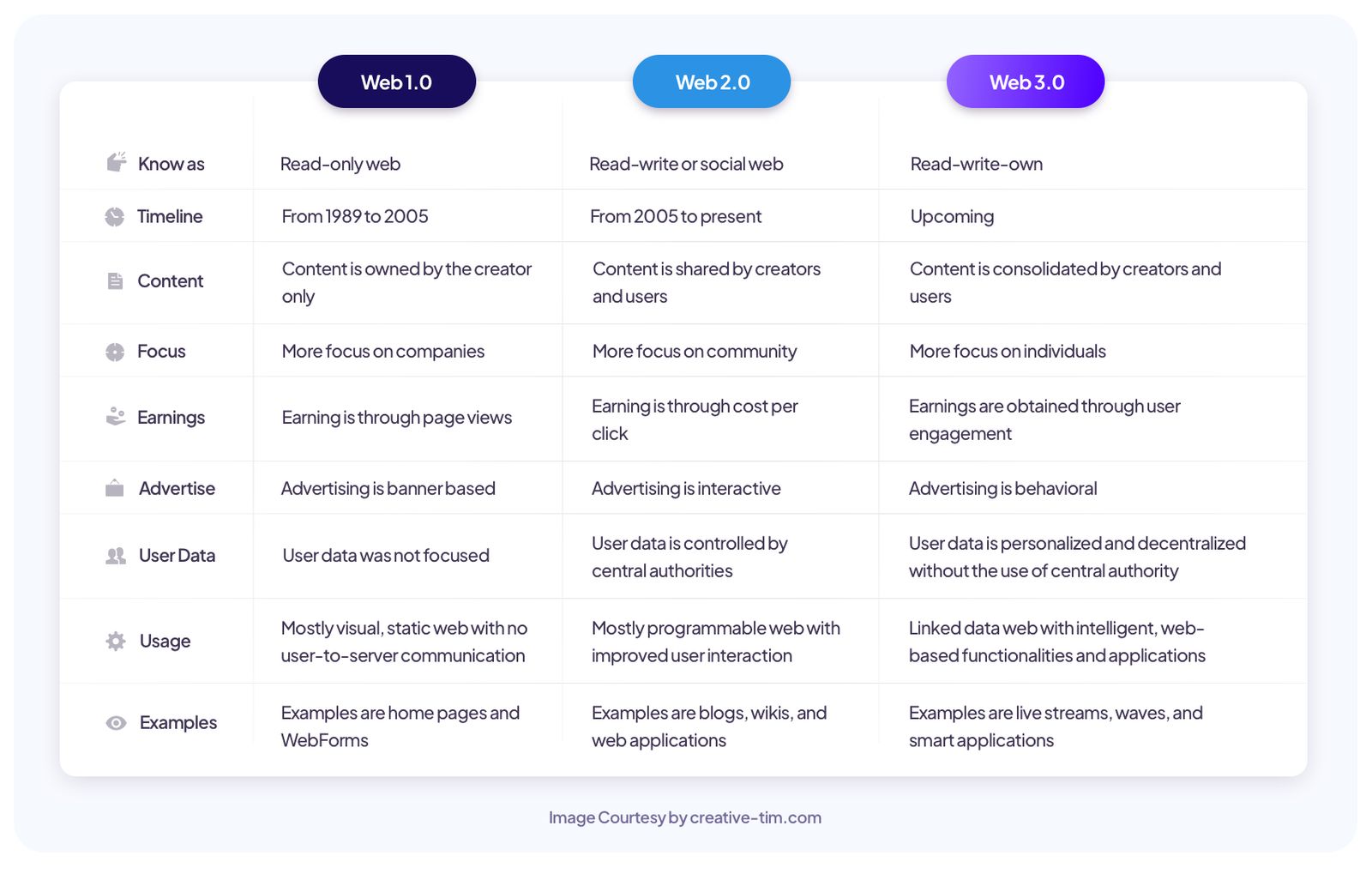
“Wait, there are different versions of the internet?”. Like many other people, it may have just dawned on you that there have always been different versions or generations of web technology. Web 3.0 isn’t even the latest conceptualized version of the internet. Industry insiders have already begun to hypothesize what Web 4.0 and 5.0 will look like.
As with media, it’s important to study the prequels before you have a contextual understanding of the sequels.
Web 1.0
A rudimentary form of the internet was devised in 1983, where networks were established for information sharing. However, the internet only began to amass public acceptance after the source code and editor of the first real web browser was released in 1993.
These early days of the web were soon to be known as Web 1.0. In this era, many web pages were written in early versions of HTML and were devoid of style sheets or scripts. Web designers would use tables and frames to align components and elements on the web page, so they were largely static.
Web 2.0
The new millennium ushered in fresh possibilities for web technology. Web 2.0 can be traced back to the end of the dotcom crash, with the term becoming official after the first Web 2.0 Summit (2004). One of the main characteristics of this era is its adoption of server and client-side scripting technologies and frameworks such as JavaScript and AJAX.
It brought about the free sorting of information and dynamic web pages that allowed users to input information. As web-enabling technologies became more accessible, the internet user base began to grow. Making the World Wide Web more…worldwide.
The Covid-19 pandemic spurred rapid acceleration in machine learning, artificial intelligence, and other web technologies – pushing us further to the edge.
Sadly, multiple studies have suggested that strict data compliance has slowed technological innovation. For instance, some developers may find themselves overwhelmed by the concept of ensuring PCI compliance in a 3D virtualized e-commerce setting. So although many industry insiders hypothesized that 2022 would be the year we finally achieved Web 3.0, we still have many obstacles to overcome.
Web 3.0
Web 3.0 or Web 3 is the next emerging evolution of the internet. The ultimate aim of Web 3 is to make the internet machine-readable, which includes leveraging technologies such as artificial intelligence (AI), cloud, and distributed ledger technologies such as blockchain. We’ve already seen how it can be used for securely receiving and storing payments made in crypto-related transactions, so conversations around Web 3 are often closely followed by conversations regarding NFTs and cryptocurrency.
Web 3.0 also requires us to move from or build up the Internet of Things (IoT) using the Web of Things. But how do virtual reality and the metaverse fit into the equation? Another important Web 3 characteristic is the widespread use of 3D graphics on the internet.
ℹ️ Are you interested to find out more about the three types of web? Read now our comprehensive guide on Web 1.0 vs Web 2.0 vs Web 3.0!
Of course, we already use 3D graphics for browser-only video/computer games. However, 3D graphics, especially when paired with virtual reality (VR) technology, has the potential to revolutionize how we shop, teach, learn, explore the world, etc.
This is where Web 3.0 collides with the metaverse.
Examples of the Best Web 3.0 Projects
Some of the best and most promising Web 3 projects include:
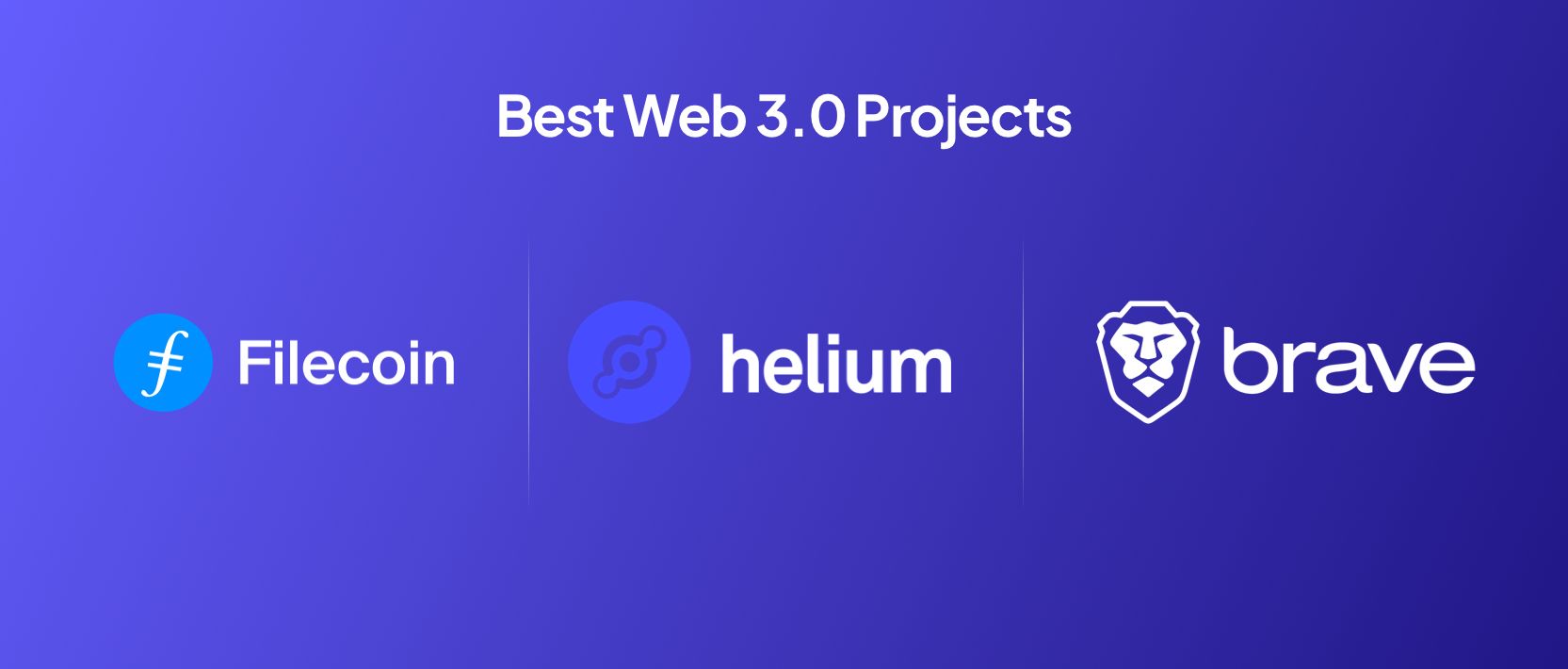
Filecoin
Filecoin is an excellent example of a project that uses a distributed ledger model similar to blockchain. The Filecoin network is a decentralized data storage marketplace. It uses a BitTorrent-like peer-to-peer digital storage network where users can store and retrieve their data in a distributed fashion. Filecoin uses built-in economic incentives to ensure that files are stored reliably over time.
Helium(HNT)
Helium offers decentralized wireless infrastructure through its own implementation of the blockchain distributed ledger model. Traditionally, crypto mining was carried out using a collection of interconnected crypto mining machines. These machines were basically computers running a batch of high-powered graphics cards. Because of their high power usage, they were not environmentally friendly.
Helium’s services revolve around a radio transmission device that it uses to create a wireless peer-to-peer network. It incentives installation of these devices by offering Helium’s official HNT cryptocurrency. Ultimately, keeping your Helium device on and running is akin to mining crypto. However, Helium’s options are more cost and power effective.
Brave Browser
For those familiar with the Brave browser, this may seem like a strange entry; Brave has been around since 2016, so it’s hardly a new technology. But similarly to how the TOR browser is made to access Dark Web Networks, users need a specialized browser for accessing Web 3.0 networks.
🤩 Interested in Web 3 projects? Check out NF-Tim by Creative Tim - our first Web 3 project - an NFTs collection for Developers, Designers, Creators, and NFTs fans based on Elrond.
Understanding the Metaverse
The internet is essentially a collection of interconnected servers distributed across the globe. Each server contains internet content that users can access from their internet-enabled devices. Of course, this oversimplifies how the internet works, but we’ll use it as a framing device.
Imagine if we could get video games to work the same. You could traverse from one video game to another simply by opening an in-game door. One minute you’re in the world of Grand Theft Auto; the next, you’re in the world of Call of Duty through a mechanic built into these games.
We can use this example to understand the metaverse. The metaverse isn’t one singular virtual reality platform but a collection of interconnected ones. While the Meta platform wants to claim the “metaverse” title to describe the integrated environment that connects all its products, that’s not what it actually is – at least not colloquially.
Meta does not own the metaverse. Horizon Worlds is often mistaken for the metaverse; however, it’s only one of the many products Facebook has invested in to gain a foothold in Web 3 and the metaverse.
Examples of the Biggest Metaverse Projects
Again, most people are familiar with Meta’s (FKA Facebook’s) contributions to the metaverse. However, they aren’t the only big players. This section of the guide will introduce you to metaverse projects that aren’t Zuckerberg driven.
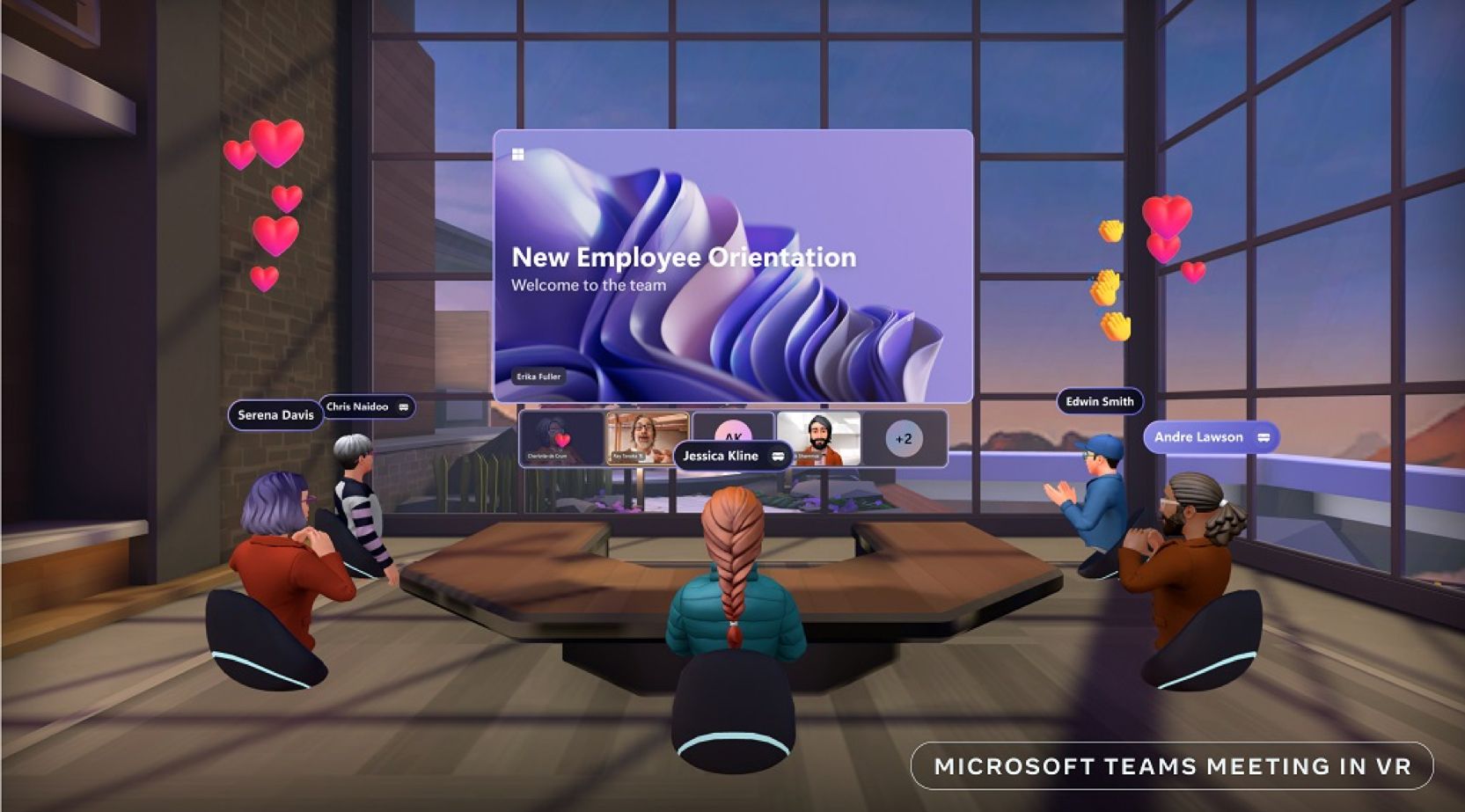
Microsoft’s primary goal is to help users acquire more accurate representations of them in the metaverse. The company hopes to make the metaverse a more immersive experience by allowing users to imprint their humanity and agency. The idea is that you shouldn’t feel that you’re being represented by an avatar but by yourself. The Covid-19 pandemic created greater distances between people. Microsoft believes that the closer people can mirror their physical selves in the digital realm, the easier it will be to close these gaps between people over the internet.
This would theoretically allow remote workers to participate in board meetings that feel real. Microsoft metaverse also promises to feature real-time translations, which would enable teammates from diverse backgrounds to communicate and collaborate more effectively.
Ultimately, where Meta’s focus on the metaverse is social, Microsoft’s is mostly business. They’ve seen virtual reality and the metaverse as a means to capitalize on the popularity of their communications and remote work platforms (Zoom, Microsoft Meetings, etc.)
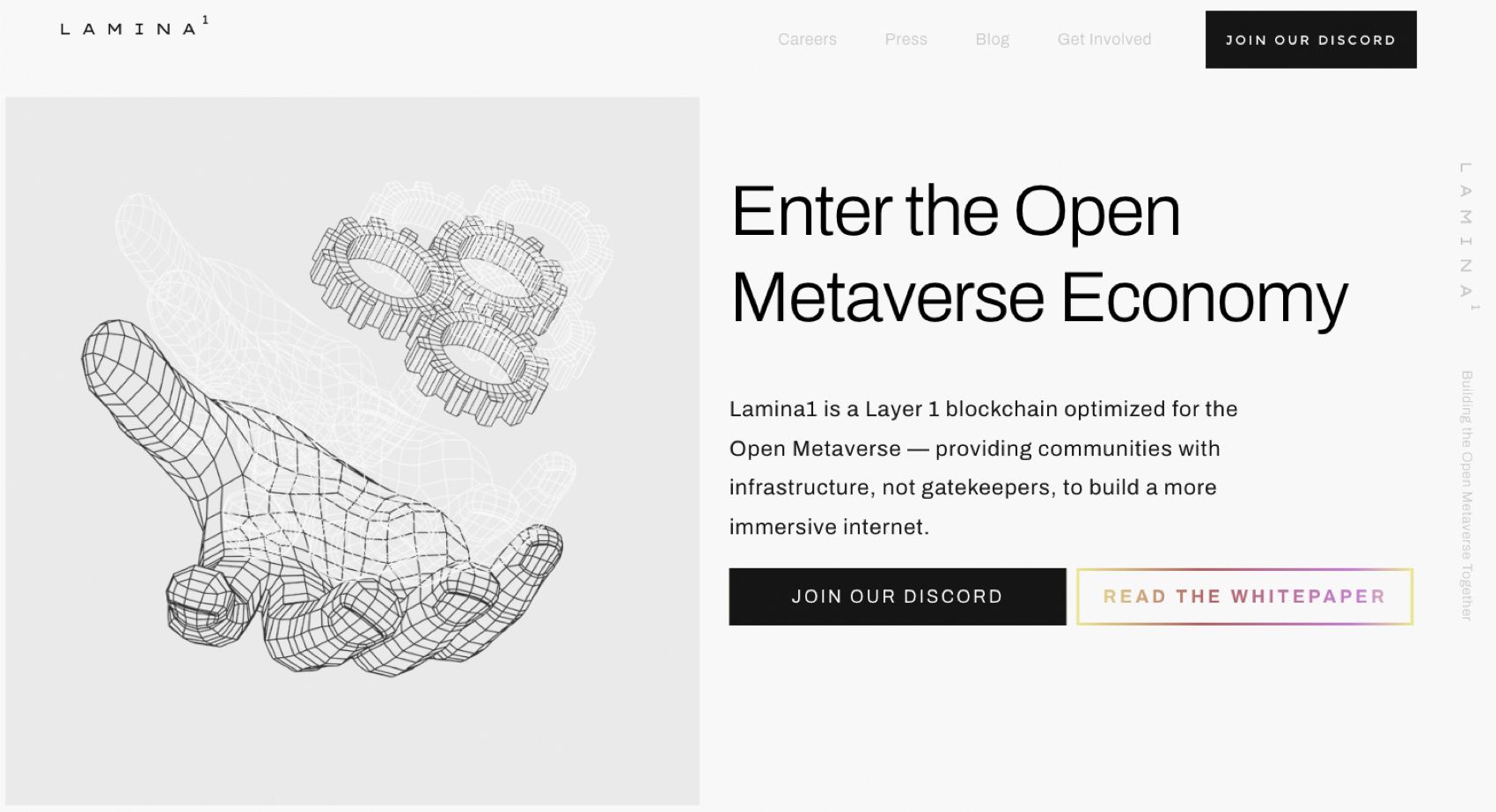
The term “metaverse” was originally coined by sci-fi author Neal Stephenson. In fact, one might muse that he is the father of Web 3 and the metaverse. In late September 2022, Neal Stephenson announced his plans to introduce his own version that would be built on distributed ledger blockchain technology called Lamina1. This would create a decentralized Metaverse that is open to all.
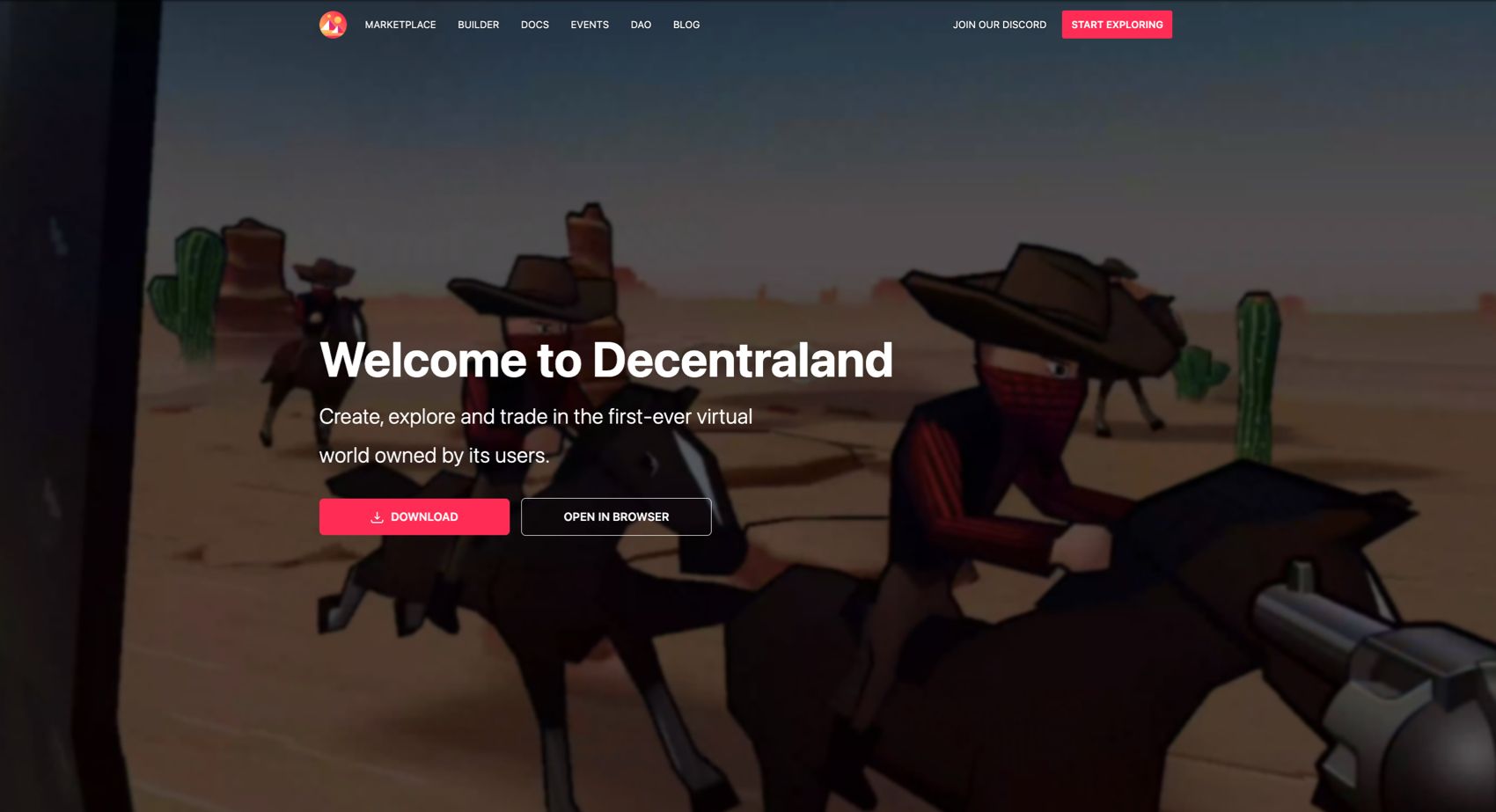
Decentraland has been in the news almost as much as Meta. Investors have spent thousands in cryptocurrency to purchase virtual land in Decentraland. Many hope to one day be able to sell this land for a profit.
It uses an Apache-2.0 license which means anyone can download it. While the software it runs on is free, the virtual lands of Decentraland are not. Land parcels are mostly bought and sold using cryptocurrency tokens called MANA.
Decentraland only grew in popularity in 2022, when big established brands such as Samsung, Atari, Miller Lite, and Adidas began to purchase properties or advertising.
Conclusion
The metaverse is a collection of interconnected virtual reality worlds. Ultimately, it is designed to permit the immersive traversal of the internet. Traditional peripherals such as keyboards and mice will be replaced with VR headsets. And your web browser will be replaced by the metaverse; it all hinges on Web 3 technology.

